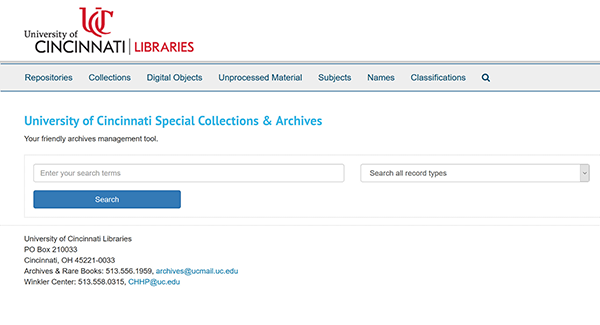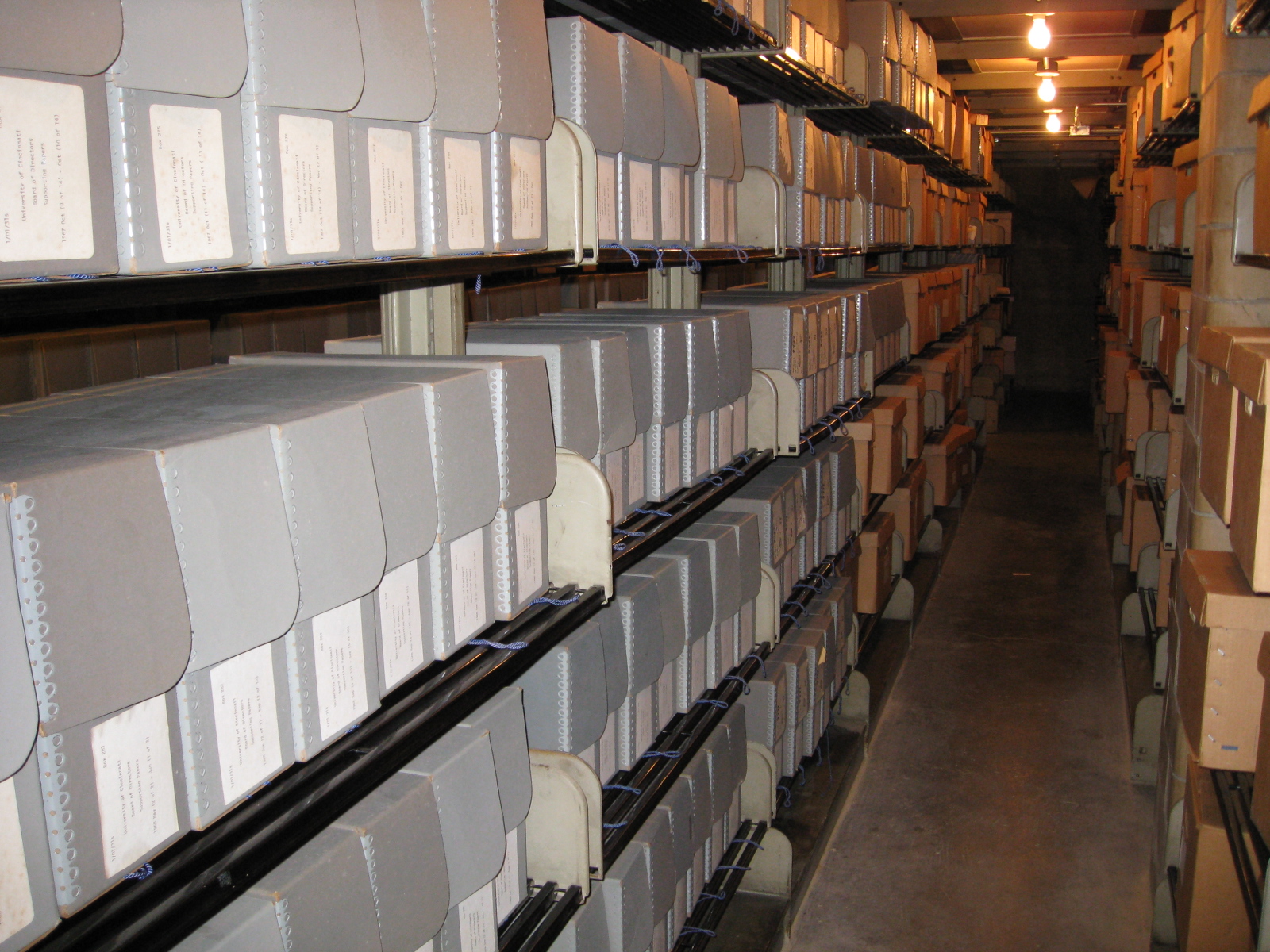
Streamlined Searching and Management of Archival Collections Implemented at UC Libraries
By Suzanne Reller, Reference/Collections Librarian in the Archives and Rare Books Library.
What do the polio vaccine, animated film music, folklore, the Heimlich maneuver and labor unions have in common? They are all subjects of archival collections in the Archives and Rare Books Library and at the Henry R. Winkler Center for the History of the Health Professions. Archival collections are papers or records of a person, family or organization and includes things like correspondence, photographs, meeting minutes and reports. Archives can be digital or hard copy, and they can encompass just few folders to hundreds of boxes or a few megabytes to terabytes of data. Since these collections are so large, we cannot adequately describe archives in the traditional library catalog, so for years archivist have created finding aids or inventories of the items in an archival collection in order to help researchers find the material.
In the past, the Archives and Rare Books Library and the Winkler Center made our finding aids available online either as pdf files or through the OhioLINK Finding Aid Repository, but there was no centralized place to search or browse just UC Libraries’ archival collections. In addition, we managed other behind-the-scenes information like shelf location and acquisition information using different software like spreadsheets and an access database. After researching the available options, we decided to transition to one archival information management system which could house all our data in one place, ArchivesSpace.
ArchivesSpace is an open source application designed by archivists to describe and manage archives, manuscripts and digital objects. ArchivesSpace is used by archives throughout the United States and was developed by the New York University Libraries, the University of California, San Diego Library and the University of Illinois at Urbana-Champaign Library, with support from The Andrew W. Mellon Foundation. More information on the development of the program is available on the ArchivesSpace website at: http://www.archivesspace.org/
The benefits of using ArchivesSpace are numerous. Researchers can browse by the names of the people and organizations who created archival collections. They can also browse the topics or subjects that are mentioned in collections. In addition, researchers can see a detailed inventory of each collection and find contact information to gain access to collections. Behind the scenes, ArchivesSpace provides UC’s archivists even more ways to manage the collections such as tracking locations, size and when collections were received. Although UC’s archivists are still in the process of learning to use the new software and cleaning up the data, we hope that it will provide researchers with an easier way to find and use archival collections at UC. Visit UC’s ArchivesSpace site at findingaids.libraries.uc.edu to search and browse our collections.





